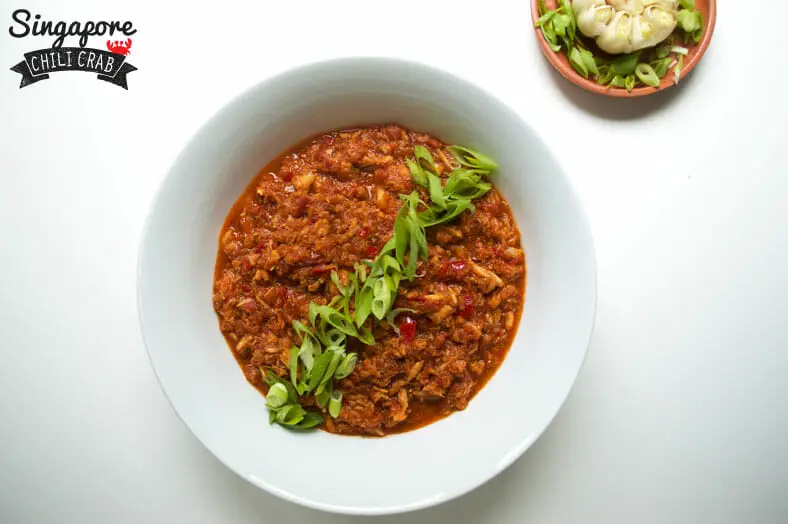It’s funny how a dish can, in effect, go “viral” and gain massive popularity… almost like a YouTube video or the next hot meme.
And yet, that’s exactly what happened to Singapore’s now-signature dish: the chili crab.
Take one delicious recipe, the ever-powerful word of mouth and some entrepreneurial savviness from its creator, and you have a dish now forever ingrained in the fabric of an already vibrant national Singaporean cuisine.

Chili Crab, Cher Yam Tian and a Multicultural Food Scene
Indeed, we will have a look into the humble beginnings of the amazingly delicious chili crab recipe, but it’s perhaps first helpful to understand the context into which this tomatoey seafood goodness has thrived.
Yep… time for a crash-course history lesson on Singapore.
Ushering The Modern Era of Singapore
One key component to the history of Singapore is its massively fortuitous geographic location. Located just at the tip of the Malay Peninsula, it has long been a highly coveted swath of land bordering straits connecting major seas like the Andaman (Thailand), the Java (Indonesia) and the South China.
Much of what has come to identify Singapore and its national culinary scene came about after 1819, when the arrival of Sir Thomas Stamford Raffles kicked off the “modern era” for the country. Prior to that, Singapore’s history paints a picture of lands belonging more to more powerful regional empires than being a regional power in its own right.
Before the creation of the Kingdom of Singapura in the late 13th century, the lands of Singapore made up Temasek, a small trading outpost city of the greater Malay Srivijayan Empire. Under both Kingdoms, the city offered an important port and trade outpost with which to foster relations both with China and Siam, but it didn’t become the economic hotbed it is today until the Europeans arrived.
Beginning with the Portuguese in the early 15th century, the Malay Peninsula became a highly coveted area for various European colonial powers. Until the British dominance of the 19th century, the trade monopoly offered by Singaporean dominance bounced around from the Portuguese to the Dutch to others in between.
Enter Sir Stamford Raffles
By 1818, the Dutch had a monopoly over the Malay archipelago, and it was proving to be problematic for the British and their desires to trade in the area. As a measure to stop Britain’s lucrative opium trade between China and India, the Dutch would try to impose various hurdles like exorbitantly high tariffs and even block ships from passing through the Malacca Strait.
Determined to do something about these obstacles, the then Lieutenant Governor of Bencoolen – a British Imperial outpost in Indonesia’s Sumatra island – set out to seize this monopoly away from the Dutch. Raffles led an expedition that landed at the southern tip of the Malay Peninsula, where he encountered a small Dutch-controlled Malay Sultanate. Gaining control of the Sultanate proved to be really easy for Raffles, however, since a large part of the population favored the Sultan’s exiled brother and easily threw their support to the British in return for bringing him back.
In under a month since his arrival, Sir Raffles signed a treaty with the newly inserted “brother Sultan” that, in exchange for a fully owned British trading post, formally recognized the new modern Singaporean state.
You May Also Like….
If you love seafood dishes you might want to check out our other recipe on a Gabonese salted cod and shrimp stew, or our coconut conch soup.
Mass Immigration and the Cultural Influence
Prior to Raffles’s arrival and the setup of a British outpost, Singapore was a small city of only around ~1,000 inhabitants, most of whom were of Malay descent. Immediately following the opening of the British trading post, you could say that the floodgates opened.
By 1869 – just 50 years later – Singapore had a population of ~100,000 people – a 100-fold increase – of Chinese, Malay, Indian, Indonesian, Middle Eastern, European and even some American immigrants in search of economic opportunity. Most of the culinary diversity that identifies today’s Singapore can trace its roots back to this influx of various cultural influences.
In addition to retaining a strong local presence of various regional Chinese, Thai and Indian cuisines after all this time, the intermingling between various ethnic groups has led to the development of certain ethnic cuisines that are distinctly Singaporean. Peranakan cuisine, for example, is a fusion cuisine borne in the late 19th/early 20th century as a result of the intermarrying of Chinese laborers and Malay women. Another example is curry debal, a unique Eurasian mixture of Portuguese and South Asian flavors that’s eaten especially around Christmas time.
It was in this thread of cultural mixing and culinary mingling that the idea of chili crab came to be.
The Legend of Chili Crab
It’s funny to think that Singapore’s de facto national dish began from such humble beginnings just 60 years ago.
The advent of chili crab begins in the home of Mr. Lim and his wife, Madame Cher Yam Tian. In the early 1950s, they were living in a small attap house – a wooden house made from the attap tree – alongside Singapore’s Upper East Coast Road. Mr. Lim was a policeman who, on his was home from work, would catch a few crabs and bring them home for his wife to prepare.
Coming from a Teochew (eastern Chinese) background, Madame Cher would customarily steam the crabs to be eaten plain. Over time, apparently Mr. Lim grew a little bored of the steamed crabs routine and asked his wife to try something different with the crabs.
At first, she tried cooking the crabs in a tomato sauce that proved to be a bit too sweet. Eventually, she added a chili paste into the tomato sauce, and the jackpot was hit. You’ll find that a lot of stew recipes uses this secret ingredient, such as our Croatian seafood stew, or this salted cod fish stew from Gabon.
Thanks to quite literal word of mouth, her special tomato and chili crab recipe became massively popular throughout the neighborhood, which prompted her to set up a small food cart in 1956 from which to sell this special recipe of hers. In just six years, business had gotten so good and the chili crab so popular that Madame Cher opened up the full-fledged Palm Beach restaurant.
Over time, the family-run Palm Beach restaurant became a Singaporean culinary fixture, and the popularity of the chili crab grew to massive heights. By the late 1980s, the family closed up shop to emigrate to New Zealand, but the chili crab dish had taken on a life of its own by then. Restaurants all over Singapore began developing their own versions of the chili crab.
In what you might be able to call homesickness, the family eventually moved back to Singapore, and Madame Cher’s children ushered in the next generation of the original chili crab. The restaurant name may no longer be Palm Beach – it’s called Roland Restaurant now, named after Madame Cher’s son Roland – but the chili crab recipe is just as original as ever.
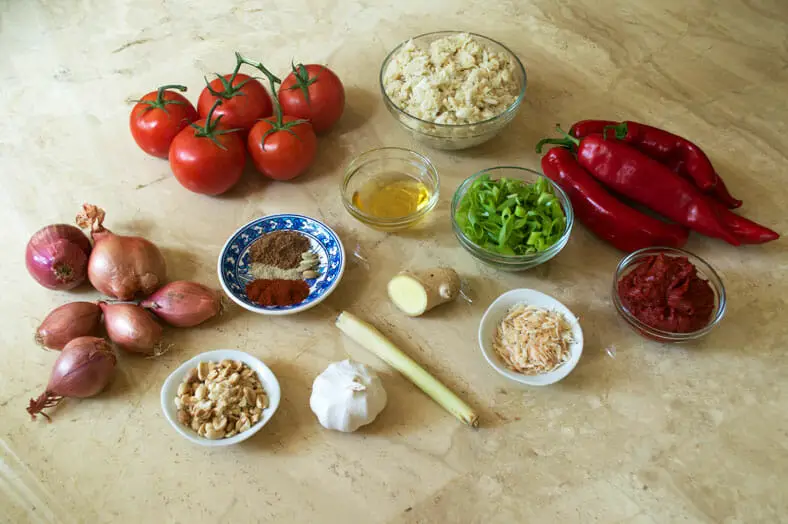
About the Recipe
For a recipe as popular as the chili crab is in Singapore, there are several pitfalls that lead you astray from the truly original recipe. Some will include sambal into the tomato gravy, while others might either top the dish with an egg… or include it in the gravy altogether.
The original chili crab, however, is a far simpler dish than the others make it out to be. There are three key pieces to making this delicious crab in its spicy chili tomato gravy goodness: the tomato sauce, the chili paste and the crab itself.
First, we’ll take a look at the chili paste. It’s in this paste where all the heat comes from that Mr. Lim liked so much. As simply as pounding chilis in a mortar and pestle – along with ingredients like dried shrimp or oily peanuts to help move the process along – all you need to do here is break your chilis down into a simple paste.
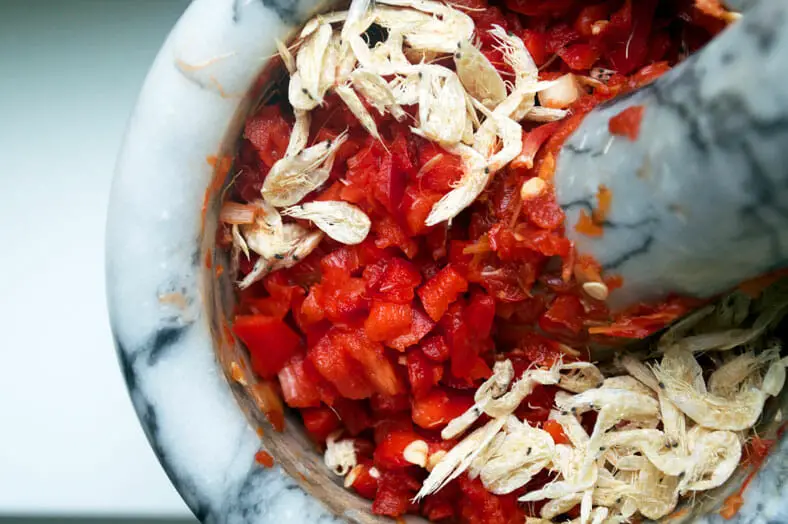

From there, you’ll move onto the tomato sauce. The root of the sauce is tomato paste and diced tomatoes that are heated up together, although you’ll want to add a few aromatic ingredients and spices in there as well. Ingredients like shallots, lemongrass, ginger and garlic are added into your sauce as it is heated up and cooked together in either a wok or a saucepan. After adding in a few spices, you’ll remove your sauce ever so briefly from the pan.

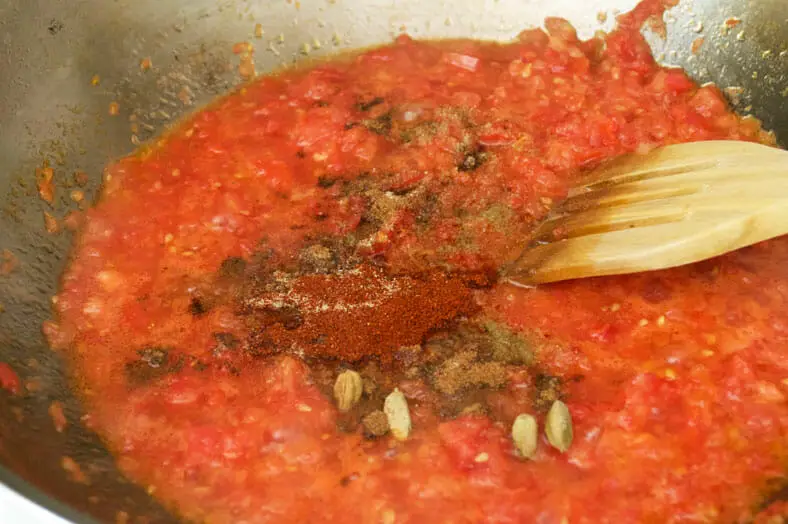
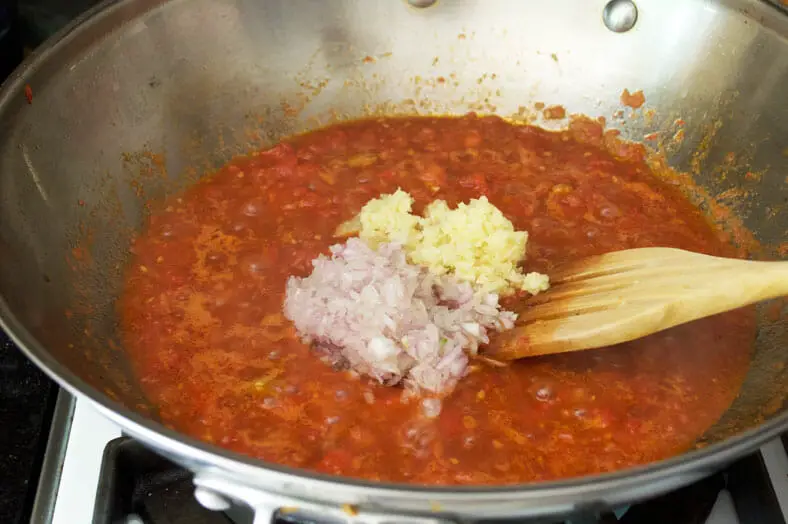

With your pan empty (though with delicious residual tomato sauce) and still piping hot, you’ll bring all the pieces together. Start by cooking some more shallots and roasted garlic, followed by your chili paste for several minutes as it gets fragrant. You’ll then add your tomato sauce back into the pan as you mix it well with the fragrant chili paste, ultimately yielding you a delicious spicy savory tomatoey gravy.
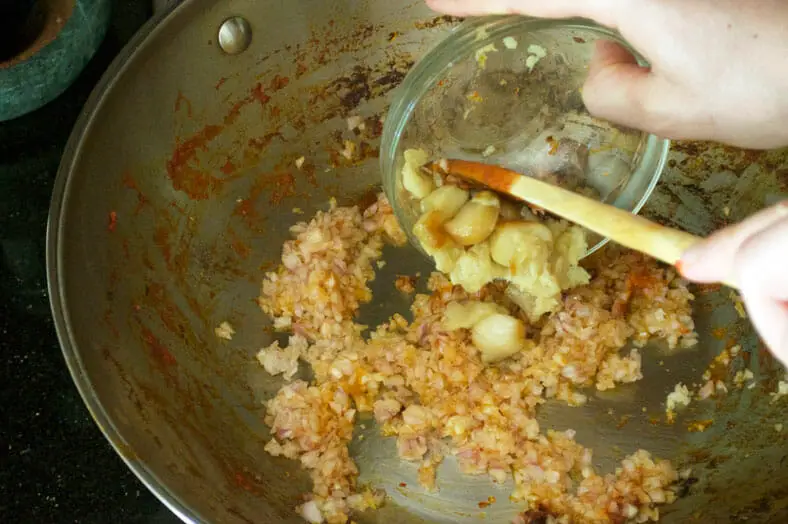
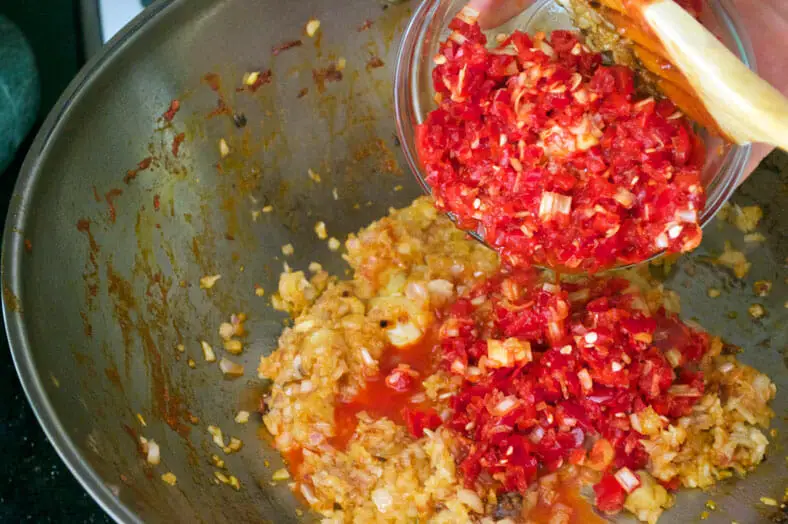

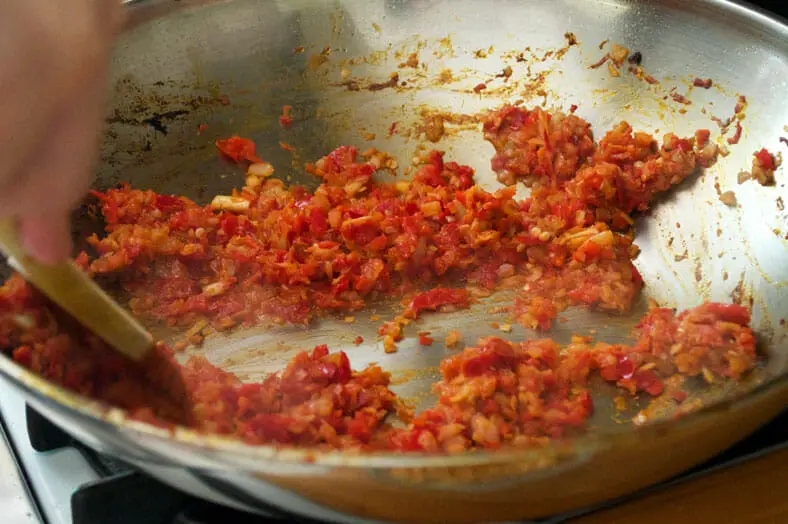
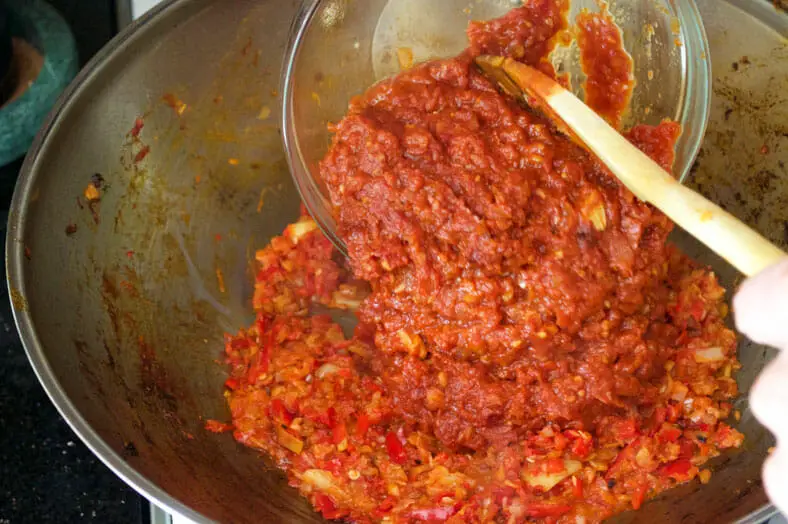
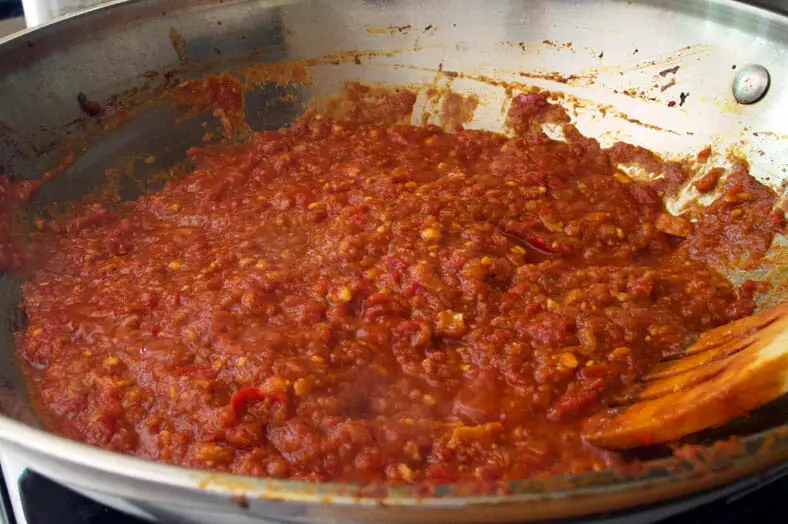
Next, add in your crab and cook in the sauce ever so briefly, and then you’re done! Garnish with a squeeze of lime juice and some cut up spring onions, and enjoy this delectable treat.
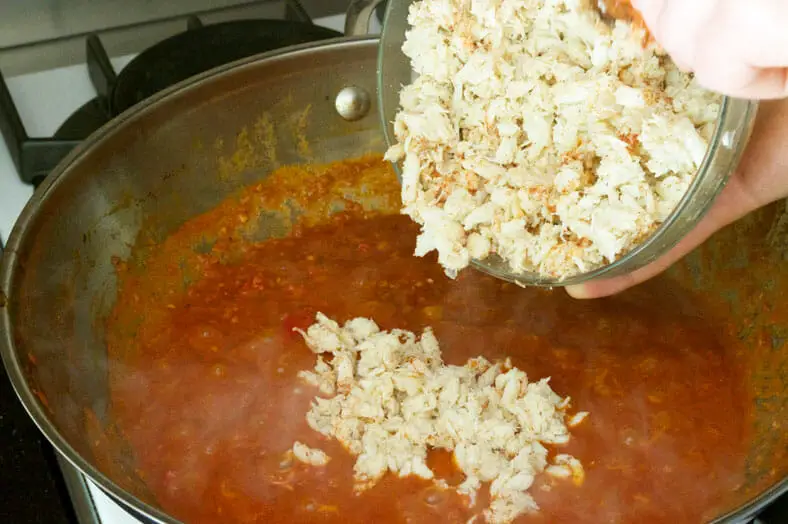

Our Take on the Recipe
For fairly understandable reasons, we had a lot of trouble finding anything resembling the truly original chili crab recipe. After all, why would the family want to openly share the recipe that is the signature feature of their new restaurant?
What we had to do instead was to do a little sleuthing and to piece together what seems to have been close to the original recipe. Luckily, we found a baseline recipe that had already done some of the legwork as well, which is why we’re using it as our original reference recipe.
One of the most drastic changes we made to the recipe actually didn’t come in the recipe at all. Rather, it was simply trying to consolidate and keep all the recipe’s information in one easy to find place where we feel like we added the most value to it.
Nevertheless, we did make some adjustments to the recipe. For one, we skipped the roasting portion of the tomatoes in order to keep the recipe simple, and we substituted coconut oil for vegetable oil for a slightly healthier fare. In the chili paste, we roasted our own dried shrimp to add into the mortar and pestle instead of the balachan.
The most drastic changes we made, however, came into the compiling of the chili crab itself. Based off the advice of other recipes, we omitted the egg from the recipe since it might not have been part of the true original recipe.
As for the crab ourselves, we admit we’re guilty of being lazy here. Instead of finding and chopping a set of mud crabs like is customary for this dish, we opted for pre-shelled crab meat simple to make the eating experience a little easier and, in a way, palatable. We acknowledge we left a lot on the table by going with the pre-prepared meat, but it made for a great difference in the convenience factor of it all.

Even so, chili crab in all its forms is a delightful dish, especially with pieces of mantou fried bread to soak up the sauce.
It’s no wonder the dish had as meteoric a rise as it did in such little time.
Enjoy!
How would you prepare your chili crab? Comment below!
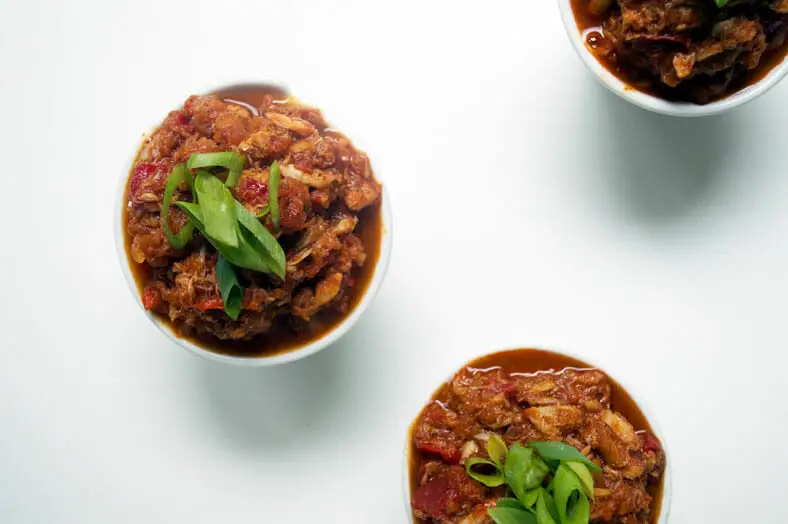
Food styled by Phil Roepers

